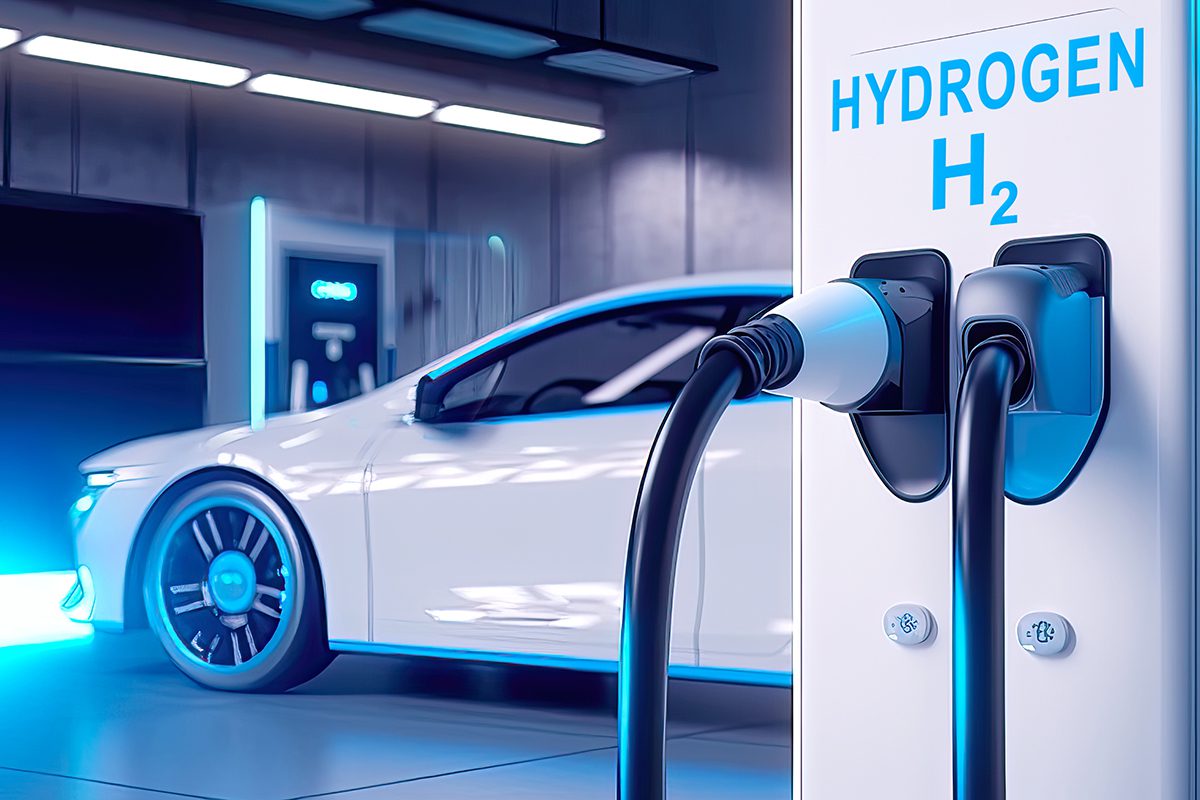What is Hydrogen

Hydrogen is the most abundant element in the universe, accounting for 75% of its total mass. On Earth, however, pure hydrogen gas (H₂) is rarely found in its natural form and is usually bound to other elements, such as oxygen in water (H₂O) or carbon in hydrocarbons.
Unlike fossil fuels, hydrogen is not an energy source but an energy carrier, meaning that it stores and delivers energy rather than producing it directly. This characteristic makes hydrogen a promising clean energy solution for a low-carbon future.
Unique Properties of Hydrogen
Hydrogen has several unique physical and chemical properties that make it an attractive energy carrier:
- High Energy per Mass: Three times the energy density of gasoline per unit of mass.
- Zero Emissions: Produces only water vapor when used in fuel cells or combustion.
- Lightweight but Low Energy per Volume: Requires advanced storage techniques (e.g., high-pressure tanks, cryogenic liquefaction).
- Versatile Applications: Used in fuel cells, industry, transportation, and power generation.
Hydrogen Production Methods
Hydrogen must be produced, as it's not readily available in pure form. Common production methods:
1. Electrolysis (Green Hydrogen)
- Process: Splitting water using renewable electricity.
- Impact: Zero emissions if powered by renewables.
- Challenges: High cost and energy intensive.
2. Steam Methane Reforming (SMR) (Gray Hydrogen)
- Process: Extracting hydrogen from methane at high temperatures.
- Impact: High CO₂ emissions.
- Advantages: Cheapest and most common (~95% of current production).
3. SMR with Carbon Capture and Storage (CCS) (Blue Hydrogen)
- Process: Like gray hydrogen but captures CO₂.
- Impact: Lower emissions, but still not zero.
- Challenges: CCS is costly and not widely used yet.
4. Biomass and Waste Hydrogen
- Process: Gasification or anaerobic digestion of organic materials.
- Impact: Potential for carbon-neutral production.
- Status: Promising but not yet widely scaled.
Hydrogen as a Fuel: How It Works
1. Hydrogen Fuel Cells
- Process: Hydrogen reacts with oxygen to produce electricity and water.
- Applications: Vehicles, backup power, portable devices.
- Efficiency: Higher than combustion engines.
2. Hydrogen Combustion
- Process: Hydrogen burned in ICE or turbines.
- Applications: Heavy transport, aviation, industrial heat.
- Challenge: Can emit nitrogen oxides (NOx).
A Brief History of Hydrogen as a Fuel
- 16th–17th Century: Metal-acid reactions recorded.
- 1766: Cavendish identifies hydrogen gas.
- 1783: Lavoisier names it "hydrogen" (water-forming).
- 19th Century: Electrolysis and early engines developed.
- 1966: GM builds Electrovan — first hydrogen fuel cell car.
- 1970s: Hydrogen used in space programs.
- 1998: Iceland plans hydrogen economy.
- 2004–2023: EU launches fuel cell platforms; Germany deploys hydrogen trains; Sweden starts green steel production.
Hydrogen’s Role in Achieving Net Zero
Hydrogen could represent 10% of global energy use by 2050 (IEA). Key roles:
- Heavy Industry: Replacing fossil fuels in steel, ammonia, methanol.
- Transportation: Decarbonizing trucks, ships, planes.
- Energy Storage: Backing up renewable energy grids.
- Hydrogen-based Fuels: Ammonia, methanol, SAF.
Challenges and Future Outlook
1. Cost of Production
- Green hydrogen: $3–$7 per kg.
- Needs scale to reduce costs.
2. Infrastructure Limitations
- Few refueling stations.
- Storage & transport are complex.
3. Competition with Electrification
- Direct electrification is more efficient in many sectors.
- Hydrogen best for hard-to-electrify areas.
4. Policy and Investment Needs
- Governments must fund research and infrastructure.
- Roadmaps are underway in the EU, Japan, and U.S.
Conclusion
Hydrogen is a critical piece of the clean energy puzzle. Though challenges in cost and infrastructure exist, innovation and investment are paving the way for hydrogen to become a mainstream solution in the transition to net-zero emissions.
References & Further Reading
Related Articles

Hydrogen and Global Policies: Challenges and Opportunities
Hydrogen, the most abundant element in the universe, has long been used in industrial processes and energy production. However, in recent decades, its role in the global transition to sustainable energy systems has become more prominent.

Introduction to Hydrogen Vehicles and How They Work
Since the invention of the first automobiles, vehicles have evolved into highly advanced machines.

The History of Hydrogen Discovery and Development
Hydrogen, the most abundant element in the universe, has played a crucial role in scientific advancements and industrial applications. From its initial discovery in the 18th century to its modern use in energy and aerospace, hydrogen has transformed various industries and continues to be at the forefront of clean energy solutions.
